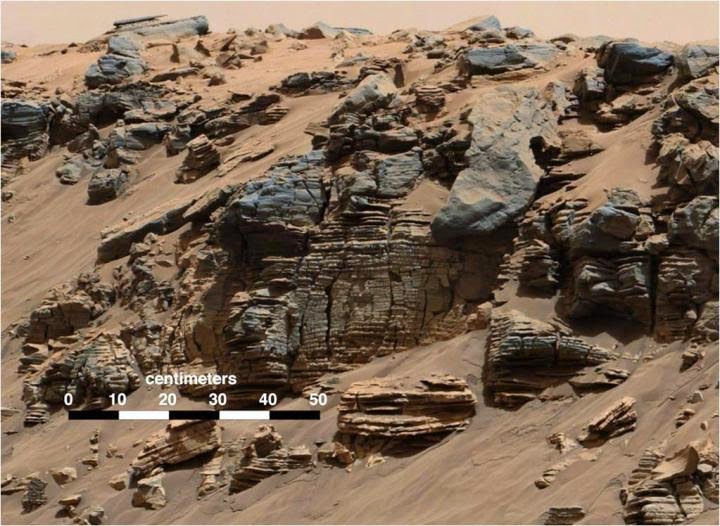| Online: | |
| Visits: | |
| Stories: |

| Story Views | |
| Now: | |
| Last Hour: | |
| Last 24 Hours: | |
| Total: | |
Scientists Find Evidence of Liquid Water Near Mars Surface
Follow TIS on Twitter: @Truth_is_Scary & Like TIS of Facebook- facebook.com/TruthisScary
Researchers have long known that there is water in the form of ice on Mars. Now, new research from NASA’s Mars rover Curiosity shows that it is possible that there is liquid water close to the surface of Mars. The explanation is that the substance perchlorate has been found in the soil, which lowers the freezing point so the water does not freeze into ice, but is liquid and present in very salty salt water – a brine. The results are published in the scientific journal Nature.
In August 2012, the Mars rover Curiosity landed on Mars in the large crater, Gale, located just south of the equator. The giant crater is 154 kilometers in diameter and the rim of the crater is almost 5 kilometers high. In the middle of the crater lies the mountain, Mount Sharp. In over 2½ years, Curiosity has travelled more than 10 km from the landing site towards Mount Sharp and has carried out many studies along the way.
“We have discovered the substance calcium perchlorate in the soil and, under the right conditions, it absorbs water vapour from the atmosphere. Our measurements from the Curiosity rover’s weather monitoring station show that these conditions exist at night and just after sunrise in the winter. Based on measurements of humidity and the temperature at a height of 1.6 meters and at the surface of the planet, we can estimate the amount of water that is absorbed. When night falls, some of the water vapour in the atmosphere condenses on the planet surface as frost, but calcium perchlorate is very absorbent and it forms a brine with the water, so the freezing point is lowered and the frost can turn into a liquid. The soil is porous, so what we are seeing is that the water seeps down through the soil. Over time, other salts may also dissolve in the soil and now that they are liquid, they can move and precipitate elsewhere under the surface,” explains Morten Bo Madsen, associate professor and head of the Mars Group at the Niels Bohr Institute at the University of Copenhagen.
Riverbed and enormous lake
Observations by the Mars probe’s stereo camera have previously shown areas characteristic of old riverbed with rounded pepples that clearly show that a long time ago there was flowing, running water with a depth of up to one meter. Now the new close-up images taken by the rover all the way en route to Mount Sharp show that there are expanses of sedimentary deposits, lying as ‘plates’ one above the other and leaning a bit toward Mount Sharp.
Source: http://truthisscary.com/2015/04/scientists-find-evidence-of-liquid-water-near-mars-surface/




